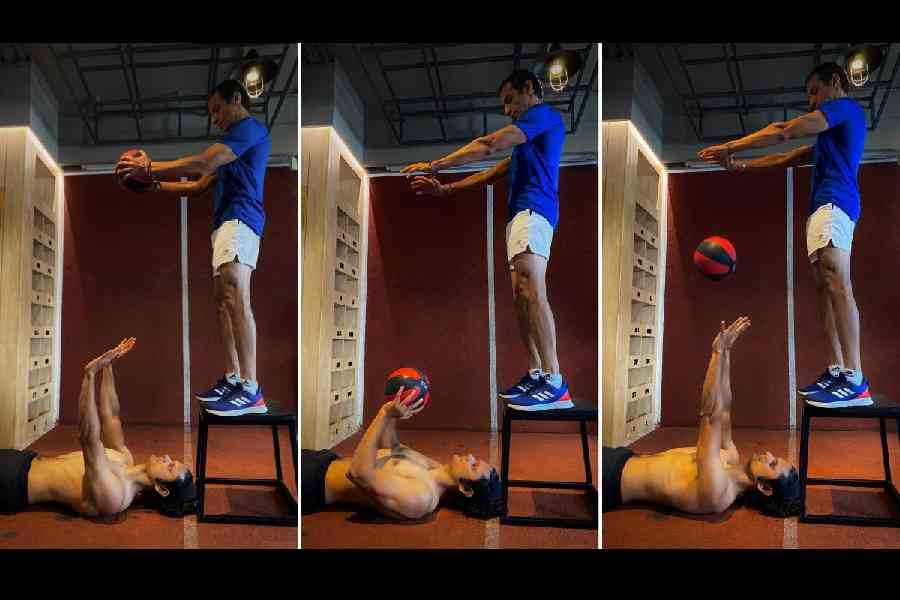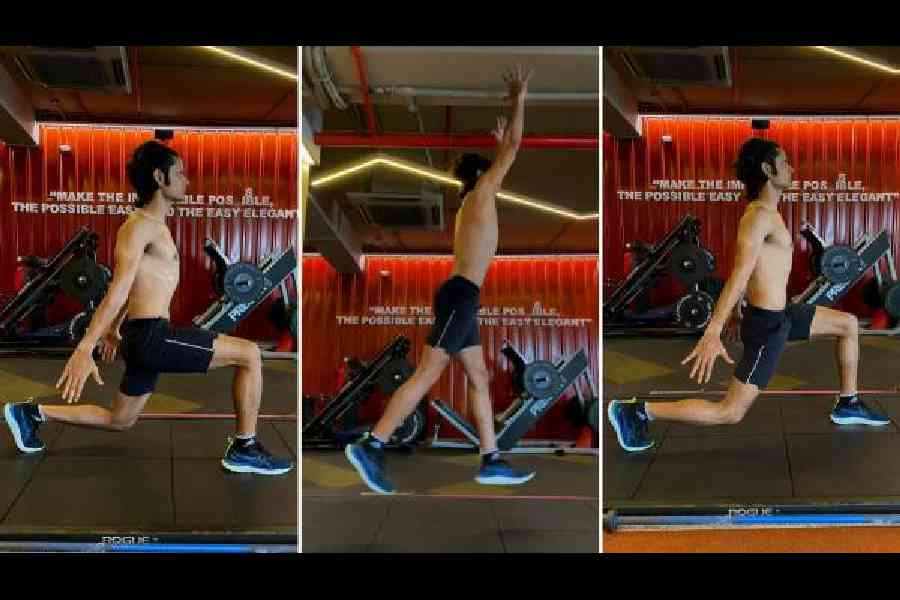Athletes have to spend a lot of time on the road. In India, many sporting and athletic meets take place in remote towns where access to gyms and strength training facilities may not be easy or even possible. A big challenge that we, as strength and conditioning coaches, face is to keep athletes in top conditioning shape during the season when they are in remote locations.
Sometimes, even if they are in the same city, their busy schedule during the competitive season does not allow them long commutes to and from the gym on a daily basis. I am often challenged to provide them with exercises to keep their strength and power levels up by prescribing a set of exercises that they can perform at home with minimum equipment.
Here, I have picked my top five movements to keep full body strength and power levels up during the competitive season; it only requires a plyo box and a medicine ball. Two exercises will need assistance in the form of a helper or training partner.
Although typically meant for power and strength development in athletes, these exercises can be performed by the general population who have had moderately long exposure to strength/resistance training. They are performed without resistance but be warned that they produce moderate to high loading and shearing forces and need a background of resistance training before they can be performed safely.
Repetitions and sets: Power development is best achieved with low repetitions and longer rest periods. Six to 10 repetitions would be a compatible zone for these exercises. A rest period of 90-120 seconds may be ideal for this objective. Bear in mind that power and speed are typically provided by Type II b, highly phasic muscles and high repetitions may be defeating this purpose.
Squat Jump
Assume a squat position (thighs parallel to the ground) with feet shoulder-width apart. Interlock fingers and place hands behind head. There is no arm action needed in this exercise. Without any dip or preparatory action, jump explosively to maximum height. Land in a squat position and immediately repeat the jump. Work keeping recommended reps in mind. This is a fairly low-intensity exercise and it may be possible to push up to 12-15 reps. You will be well advised to keep the reps low to prioritise power development as against cardiovascular competence.
Cycled Split squat jump
Assume a lunge position with one leg forward and hips/knees flexed to approximately 90 degrees. The other leg should be placed just behind the midline of the body. Begin with a slight counter-movement and explosively jump up, using the arms to assist as needed. The arms should be right above your head at the top of the movement. While off the ground, switch the position of the legs. Maximum height and power should be emphasised. When landing, maintain the lunge position (opposite leg forward) and immediately repeat the jump.
Note: Be sure that the lunge is not too deep otherwise you will lose the elastic energy and not be able to generate the recoil force in the subsequent jump.
Power Drop
This is a high-intensity exercise needing equipment, that is, a plyometric box measuring 12 to 42 inches in height and a medicine ball weighing 1kg to 3kg. You will need assistance in this exercise from a coach or training partner.

Power drops
Lie supine on the ground with elbows extended and both shoulders in approximately 90-degree flexion. The partner should be on the box with the medicine ball held above the athlete’s arms. When the partner drops the ball, catch it using both arms and immediately throw the ball back to the partner. 10-12 is a good repetition range to work on. Intensity may be increased by increasing the weight of the ball or by increasing the height of the box. (You could begin with a 1kg ball and 12 inches for the box and gradually work your way up).
Plyometricpush-ups
For a seasoned athlete, the plain vanilla push-up may be too easy and it is necessary to introduce some sort of explosiveness to make the movement more challenging. Also during in-season and travel, you want your athlete to fatigue quickly, not having to do too many repetitions to achieve momentary failure to the point of fatigue.You will need a medicine ball weighing 2-3kg.
Assume a push-up position with the hands on the medicine ball and elbows extended. Explosively remove the hands from the ball and allow it to drop down so that it contacts the ground with the hands slightly wider than shoulder-width apart and elbows slightly flexed. Allow the chest to almost touch the medicine ball by letting the elbows flex. Immediately and explosively push up by fully extending the elbows. Quickly place the hands on top of the medicine ball and repeat the movement. Work till fatigue.
45 degrees sit-up
You will need a medicine ball of around 1-3kg and a partner. Sit on the ground with the trunk at approximately 45 45-degree angle. The partner stands a short distance away (as depicted in the illustration). The partner throws the ball to the athlete’s outstretched hands. The athlete catches it using both arms and returns it with a propulsive action but using minimal trunk extension. (The force used to return the ball has to predominantly come from the abdominal muscles.)
Ranadeep Moitra is a strength and conditioning specialist and corrective exercise coach.






